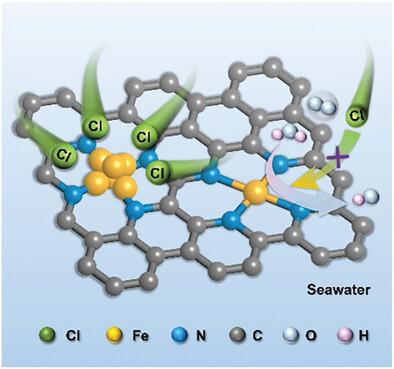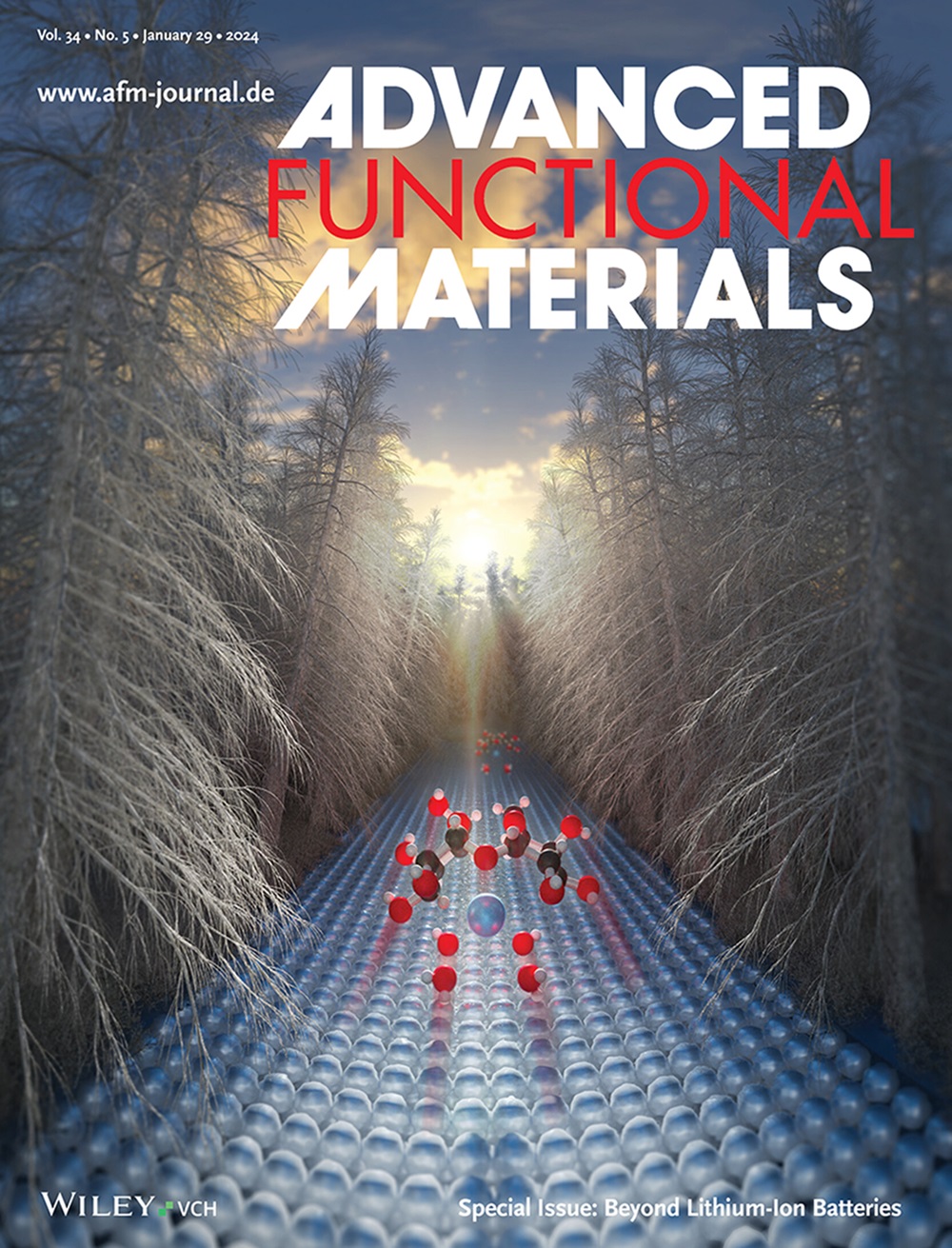Protection of Fe Single-Atoms by Fe Clusters for Chlorine-Resistant Oxygen Reduction Reaction
IF 18.5
1区 材料科学
Q1 CHEMISTRY, MULTIDISCIPLINARY
引用次数: 0
Abstract
Direct seawater zinc-air batteries (S-ZABs), with their inherent properties of high energy density, intrinsic safety, and low cost, present a compelling avenue for the development of energy storage technology. However, the presence of chloride ions in seawater poses challenges to their air electrode, resulting in sluggish reaction kinetics and poor stability for the oxygen reduction reaction (ORR). Herein, Fe atomic clusters (ACs) decorated Fe single-metal atoms (SAs) catalyst (FeSA-FeAC/NC) is prepared using a plasma treatment strategy. The aberration-corrected transmission electron microscope images confirm the successful construction of Fe SAs surrounding Fe ACs, which delivers robust ORR activity with a half-wave potential of 0.886 V in alkaline seawater electrolyte. When utilized as the cathode catalyst in assembled S-ZABs, the battery demonstrates excellent discharge performance, achieving a peak power density of 222 mW cm−2, which is 2.3 times higher than Pt/C based S-ZABs. Moreover, density functional theory calculations unveil that the synergy effect between the Fe ACs and SAs not only reduces the spin-down d-band center in the Fe SAs, but also efficiently suppresses Cl−1 adsorption on Fe SAs due to their strong Cl−1 absorption ability of the Fe ACs, thereby enhancing both the activity and stability of the catalyst.

用铁簇保护铁单原子以实现耐氯氧还原反应
直接海水锌空气电池(S-ZABs)具有能量密度高、内在安全和成本低的固有特性,为储能技术的发展提供了一个引人注目的途径。然而,海水中氯离子的存在给其空气电极带来了挑战,导致反应动力学迟缓,氧还原反应(ORR)稳定性差。在此,采用等离子体处理策略制备了铁原子簇(ACs)装饰铁单金属原子(SAs)催化剂(FeSA-FeAC/NC)。经像差校正的透射电子显微镜图像证实,成功地构建了环绕在铁原子团(AC)周围的铁原子团,在碱性海水电解液中具有强劲的 ORR 活性,半波电位为 0.886 V。在组装好的 S-ZAB 中用作阴极催化剂时,电池表现出卓越的放电性能,峰值功率密度达到 222 mW cm-2,是基于 Pt/C 的 S-ZAB 的 2.3 倍。此外,密度泛函理论计算表明,铁 AC 与 SA 之间的协同效应不仅降低了铁 SA 的自旋向下 d 带中心,而且由于铁 AC 对 Cl-1 的强大吸收能力,还有效抑制了 Cl-1 在铁 SA 上的吸附,从而提高了催化剂的活性和稳定性。
本文章由计算机程序翻译,如有差异,请以英文原文为准。
求助全文
约1分钟内获得全文
求助全文
来源期刊

Advanced Functional Materials
工程技术-材料科学:综合
CiteScore
29.50
自引率
4.20%
发文量
2086
审稿时长
2.1 months
期刊介绍:
Firmly established as a top-tier materials science journal, Advanced Functional Materials reports breakthrough research in all aspects of materials science, including nanotechnology, chemistry, physics, and biology every week.
Advanced Functional Materials is known for its rapid and fair peer review, quality content, and high impact, making it the first choice of the international materials science community.
 求助内容:
求助内容: 应助结果提醒方式:
应助结果提醒方式:


